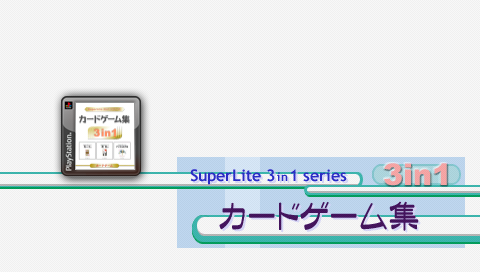
Here are all the EBOOT asset packs I’ve made for myself! All modesty aside, I think they’re pretty high quality – besides using official art for the backgrounds with no distortion or bad upscaling, all of them feature background music as well, which most PSX2PSP collections omit.
I’ve used ATRACTool-Reloaded to convert the BGM to AT3. As always, to play multi-track games, I recommend joining the BIN files with CDMage and using the CDDA Enabler plugin.
To preview the background music, click the sample pictures!

I’m a sucker for card games, and this collection of Success’ best from their budget series is great. It includes a good blackjack and a good koi-koi, which alone would be enough to keep me entertained for an astonishingly long time, but this disc also includes poker, pyramid, speed, oicho-kabu, hana-awase, hachi-hachi and also much less brilliantly concentration and tycoon. Whatever points were deducted by the crappiness of concentration, which is barely a card game if you ask me, are quickly made back up by the third title in this 3 in 1 value pack: Angolmois 99, a game in which one of Nostradamus’ prophecies is fulfilled and that means you, as a space angel that looks an awful lot like David Bowie, have to play knockoff Uno against Bill Clinton in order to usher in the end times. Seriously.
There’s also an alternate background I made earlier with much cleaner graphics, all nicked from the cover art itself, but I think that the Y2K aesthetics of the title screen go too hard to be ignored. Mouseover the sample picture to see the alternate background – it’s included in the regular download.
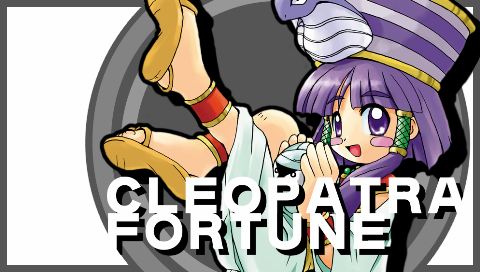
Cleopatra Fortune is one of my favourite games ever, and anything I own that can play video games must have a copy of it to be complete. Sadly, no current fork of MAME or FinalBurn on the PSP has an implementation of the arcade version, so Altron’s very much imperfect PlayStation port has to do. I mean, it’s not bad, I don’t think any Altron game is, but if you’re used to the arcade version you know this isn’t the real thing as soon as you grasp the controller. I run the Japanese version because, well, Cleopatra Fortune isn’t Cleopatra Fortune without the screen-tall Patra-ko drawings you get when you manage to clear the board. The American version had those removed, and the PAL version was made by the worst of budget publishers that managed to break the game’s sound, and everybody knows that Cleopatra Fortune isn’t Cleopatra Fortune without Shinin’ Queen.
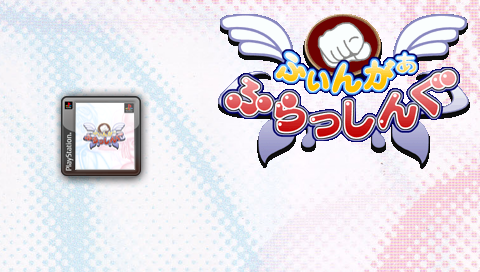
A delightfully whimsical little puzzly shmup with rock-paper-scissors mechanics that never left Japan. If you don’t speak Japanese, by all means use the fan translation by RIP – as the worryingly low RHDN ID number may hint, it may be ancient and have released while the game could still be found brand new in shops if you were Japanese enough, but it’s worth it. This game used to have a dedicated minisite that was up right until Affect’s demise on the early 2010s, but tragically, many of the pictures it had including the entire illustration gallery went unarchived.
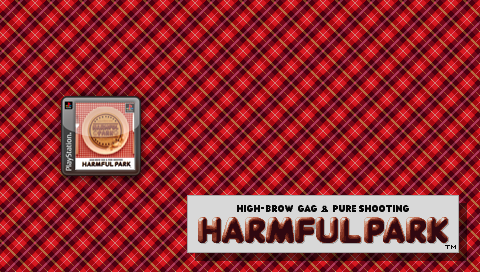
This is one of those games that were made by a tiny company, printed in very low numbers and sold very little to almost no reception whatsoever, only to garner a massive cult following over the years and drive the price of secondhand copies to the moon. This is, by many accounts, the definitive parody shooter, featuring all sorts of gimmicks and ridiculous visuals and effects to gawk at. Despite being an endeavour from a small, unestablished developer, it is a very polished game, with excellent art, wacky voice acting that was probably done by random programmers who used to go to theater club and a soundtrack that just begs for a CD release that never came. Sky Think System, the company that not only developed but also self-published Harmful Park, were apparently an IT company offering a motley collection of products that ranged from the three games they developed and published, to a gaming tips hotline, to printing and imaging services, to network services aimed at educational institutions, if their website was to be believed. They eventually dropped off the games market, became SKY Group and are still trading to this day, only ever so briefly looking back during the PSP/PS3 era when they rereleased their entire three game library on the Japanese PSN under the name SKYSEA Games.
This one also has an alternate background, made with material from the 1997 press release. Mouseover the sample image to take a peek.
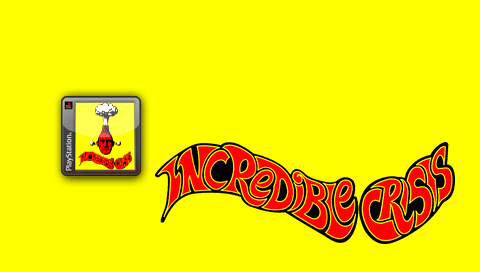
It’s hard to believe that this extremely Japanese comedy game made it outside of Japan, but it sure did. It’s a delightful minigame rush that has you go through a very much not average day in a traditional Japanese family and the less said before you play it, the best. I have no idea what this game’s budget was, but I imagine Tokuma Shoten had quite a few bucks to blow on this one, considering the superb character work and the real, actual philharmonic they hired for the soundtrack. Titus’ American conversion omits two minigames, but only because they inherently depend on the way the Japanese language is written, so it was sensible to cut what you can’t properly translate.
There’s also an alternate background if you don’t fancy the very yellow one I liked best (hover the mouse to see).
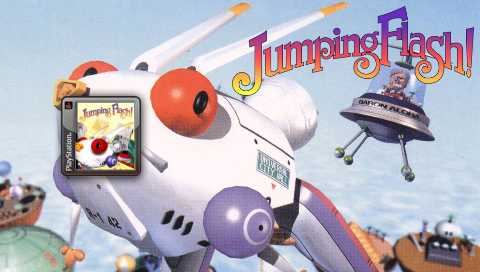
3D platforming is one of those things that we take so much for granted nowadays that it’s easy to forget there was an entire journey to get it figured out. The first 3D platformer ever made, Geograph Seal, played almost completely differently from what we’re used to nowadays: despite the tank controls, it had a big emphasis on the jumping action, with the camera dramatically changing angles as you moved and jumped to great heights. While that trailblazing game would forever remain a Sharp X68k exclusive, the developers would go on to make a spiritual successor for the PlayStation, and that would be Jumping Flash!, the second 3D platformer ever made. It was this game that tragically inspired the ill-fated Bubsy is 3D in Furbitten Planet, but that’s only because this was literally all they had to work on. In the end, the design principles that would triumph over all others would be those born of the seminal Super Mario 64 from the following year, maybe the first 3D platformer that mattered. Even franchises that were born of competing design philosophies such as Crash Bandicoot would later change into a Marioesque design. Such is the way of the art: the invention of new technology brings a creativity boom, and the passing of time brings a normalisation made through the survival of the fittest. But that doesn’t mean that Jumping Flash! is bad or outdated – in fact, my opinion is that it aged better than Super Mario 64, perhaps because Mario’s controls and physics and camera were refined over the course of many iterations from countless developers, while the high jumping, sharp shooting, enemy stomping fun from Exact remained fresh.
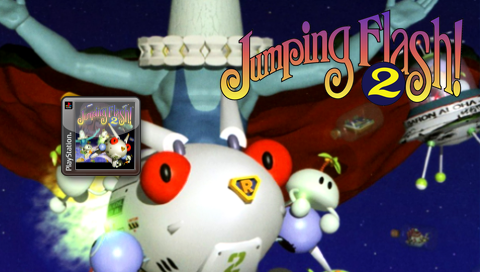
Like Geograph Seal before it, the original Jumping Flash! is a bit on the short side. This sequel is more of the same, which in this case is pretty welcome. The series also had a third game in Robbit Mon Dieu!, which was a lot different from the first two and featured quests and dialog and whatnot, but sadly that not only never left Japan but also never got fan translated. The gimmicky minigame rush PocketStation spinoff Pocket MuuMuu suffered a similar fate, though probably because the PocketStation never left Japan either.
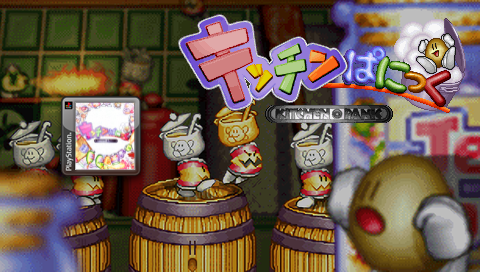
This game has no relation to the other Kitchen Panic released by Coconuts on the Game Boy many years prior. This is a 2D platformer with wide, slightly labyrinthine levels and very, very cute graphics that made me instantly fall in love with it. The excuse plot is about kitchen utensils and foodstuffs becoming sentient and wreaking havoc and I don’t know much more about it other than that the tin cans are really cute. It’s quite a hard game, but the controls are very tight and fair, and if you get familiar enough with the stages, you can zip through with great speed across the kitchen. This was also released on Windows back then and, believe it or not, since Panther is still somehow alive, there’s now an Android version that on a cursory glance of its files seems to be a straight port. Furthermore, like Finger Flashing, this game had a minisite… except Panther is still alive, so the pages are still up, complete with the wallpapers and, incredibly, the icon pack! Remember when those were a thing? I don’t know what I’m going to use those for besides the cursor you are seeing on mouseover right now but I’ll eventually find out :3
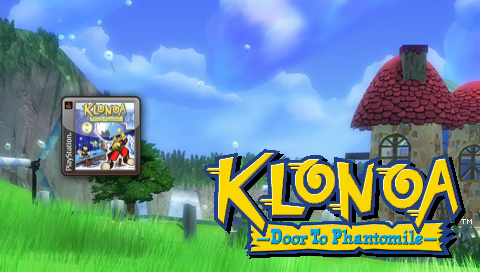
There are not enough words to describe how much I love this game. If you’re somehow not familiar with Klonoa, I urge you to drop everything you’re doing and play it now. Seriously, this is one of those games that are nothing what it looks like and discussing it for more than five minutes is impossible without walking into a spoiler. The PlayStation 2 sequel, Klonoa 2: Lunatea’s Veil, is arguably even better, revolving around… see, even if I say what the plot is about, that would be a spoiler. Just let it be known that it is extremely good and very emotional and that, if you have a modern console or a relatively high-end gaming PC, the recent remakes are worth every penny (even if in my heart nothing will ever beat the whimsical charm of the low-res spritework on low-poly landscapes of the PlayStation original). My only word of warning is to give the Wii remake a miss.
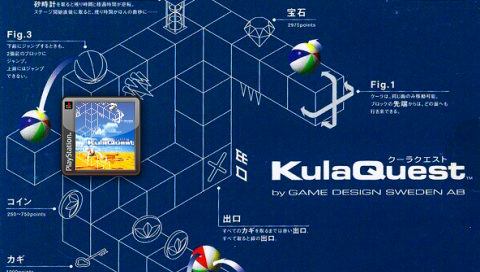
I’m pretty sure someone nicked this game in the mid 2000s, because everybody I’ve ever talked to about this game – myself included – initially had vague memories of playing it on a browser with Adobe Flash on one of those old game websites. You’re a beach ball and you have to navigate yourself around a 3D structure, and gravity changes direction whenever you roll to an orthogonal side of the Escherian structure you’re on. It’s fun and challenging, but sadly the code isn’t as tight as the game requires: sometimes you have to jump while rolling several times in a row, and that will cause you to fall out of sync with the grid because the game engine they used was made for free movement like 99% of other 3D games and the programmers didn’t patch around it well enough. I play the Japanese version because it was the last one to be released and therefore, in this case, it is the one with the least amount of bugs and design oversights, and there’s no good reason to play the American nor the original PAL versions in this day and age.
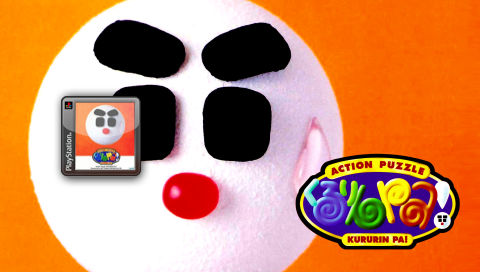
If you’ve heard of Sky Think System, it’s probably because of Harmful Park, the seminal parody shmup that I’ve already droned about on this very page. That was the last of their three games. Kururin PA! was the first, and they showed that their talent wasn’t limited to shoot-’em-ups. Falling block puzzle games are my favourite genre of games that aren’t story driven, and while I love Cleopatra Fortune, absolutely nothing beats this game, and it baffles me that nobody seems to talk about it. Even pixiv has barely any fanart of it, despite it featuring a wacky cast of very ’90s world stereotypes that not very subtly take the mick out of Street Fighter II. The impromptu voice actors predictably make an anachronistic return, and if you’ve played Harmful Park before you’re guaranteed to have whiplash at certain voices being shared among very disparate characters. The gameplay is a mishmash of prior, questionably good titles that together make a ridiculously addictive game that makes hours fly by: the main blocks of the game are pieces of wick that you have to connect (like Gorby’s Pipeline); there are bomb blocks that, when lit, set fire to all adjacent blocks (like Panic Bomber); and each character has a special item that behaves differently, one of which – the main character’s, Japanese schoolgirl Nana Kisaragi –, rolls in a straight path crushing all garbage blocks on its path (like Pac-Attack). It’s a brilliant game with a brilliant soundtrack that, once again, begs so much for a CD release that never came that each song actually has a title that you can see on the built-in sound test. One of the character themes is titled Fuck You Crazy, by the way, and I think that’s about everything you need to know about this game.
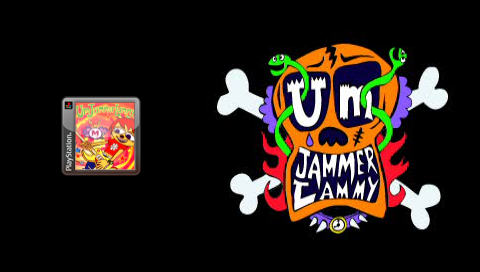
This is a game that shouldn’t bear introduction. After PaRappa the Rapper became a sensation, Rodney Greenblat and Sony followed their ~groovy~ effort with a spinoff starring a rockstar guitarist lamb inspired by Natalie Imbruglia, as much as the artist wanted to keep it closer to PaRappa. It’s good wacky fun, the songs aren’t bad and the game has aged quite well despite being one of the first modern rhythm games. Unbelievably, the American version has quite hefty censorship, so if you can’t speak Japanese you should probably go for the PAL version.
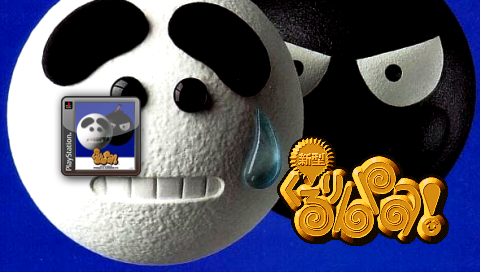
You guessed it, the other Sky Think System game is also here. This is naturally a sequel to Kururin PA!, with new mechanics and a lot of subsitutions on the ensemble cast. In my opinion this isn’t as good as the original, though; the addition of fire pack blocks that turn into fire when heated made the learning curve way too steep and without a second player to learn together in the versus mode you’ll probably have your arse handed to you in the early levels so often that you won’t have much incentive to git gud. I’m only saying this because the little I’ve seen spoken about this game shared the same sentiment, so maybe there is more weight to my words, but then again it might be worthy of note that I consider Puyo Puyo too big brain to be enjoyable, so your mileage may very well vary.
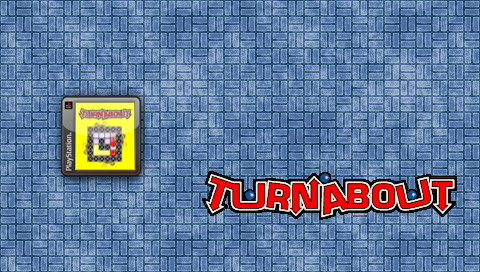
As usual for Artdink, this is a really well-polished and zen puzzle game, featuring a relaxing soundtrack and background visuals that mimic a kaleidoscope. Each level has a board with narrow passages and moving parts and the goal is to guide coloured marbles to coloured blocks by turning the entire system 90° at a time. I guess it’s a bit like Cameltry, except completely different. The game has no timer, just a set par for each level that you may or may not choose to aim for, and all moving parts only move in response to shifts in gravity caused by you. It’s quite long, but it’s not meant to be played in a single sitting at all – like most of Artdink’s output, this is a game to sit down, relax and take your mind off your problems.
The assets pack includes some alternate background ideas taken from the game’s files, in case you’d rather have something other than the swimming pool-ish tiling I chose.
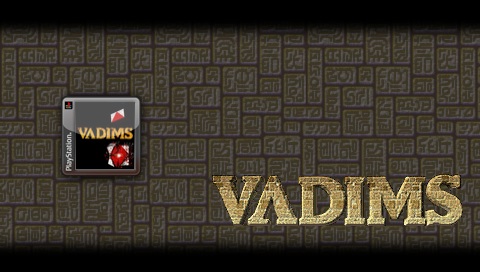
When he was 16, Vadim Gerasimov was an intern at the Dorodnitsyn Computing Centre in Moscow, then Soviet Union. There, he worked with Alexey Pajitnov right when he was creating Tetris. Gerasimov was the one who ported the Electronika 60 original to the more popular IBM PC, and there’s where the consensus ends – depending on who you ask, he either helped Pajitnov fine-tune the game’s difficulty together with other staff members at the computing centre or he was a co-creator of the entire game, almost as important to its making as Mr. Alexey himself. Whatever the truth is, the fact remains that Vadim’s name was cemented in the annals of video game history when he wrote that IBM PC port that spread across the Warsaw Pact and then to the rest of the world through Hungary and the United Kingdom, but that’s another story. After Tetris, despite some attempts to get into the video game industry, he ended up making his career as a programmer, which at the time of this writing he still is – at Google, none less. However, in the mid 1990s, at the peak of the falling block craze in Japan, he was hired by ITC to design a new puzzle game, and what he came up with was Vadims, which might be the only 2.5D falling blocks puzzle game ever. The blocks are 2×1 units of diagonally-painted cubes, and every time you manage to form a diamond with four adjacent cubes, the blocks that include them are destroyed whole. The main novelty comes in that you don’t rotate the blocks as you would in Tetris or Puyo Puyo: instead, you rotate them along their longest axis, tridimensionally. This allows you to leave a block without diagonal markings, and if you stack two of the same solid colour together, they become glass and can be destroyed by forming a diamond next to them. Let’s not beat around the bush here: this game was obviously inspired by Kohs blocks. Even the default colours are the same. If you don’t know what those are, good for you, I wish I didn’t either, but it’s quite clear that Vadim had taken a dodgy test at some point in his life and that’s what came to mind when he was hired to design a puzzle game. And yeah, those damn blocks just beg to be played with, so naturally this is a fun game. There are also a bunch of different game modes, so it pretty much never gets stale.
Last update: 2024-09-29